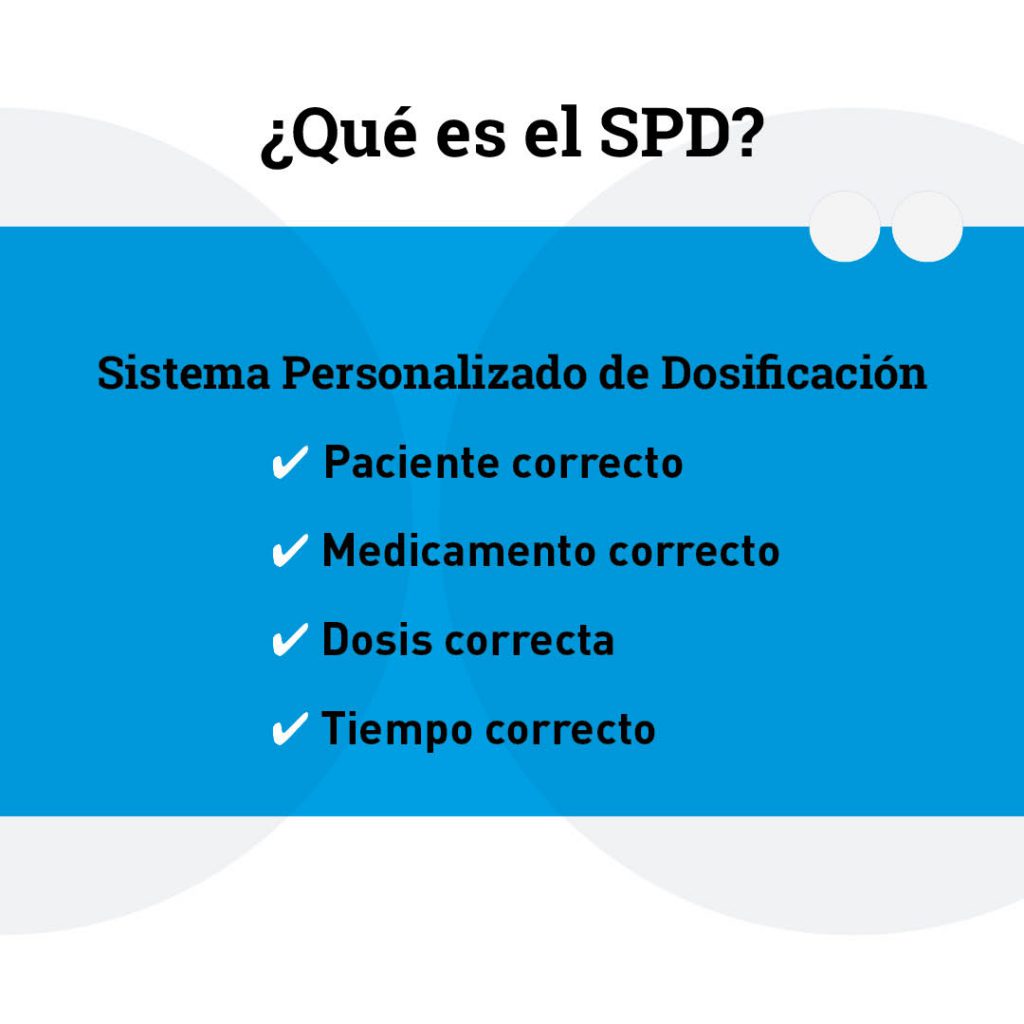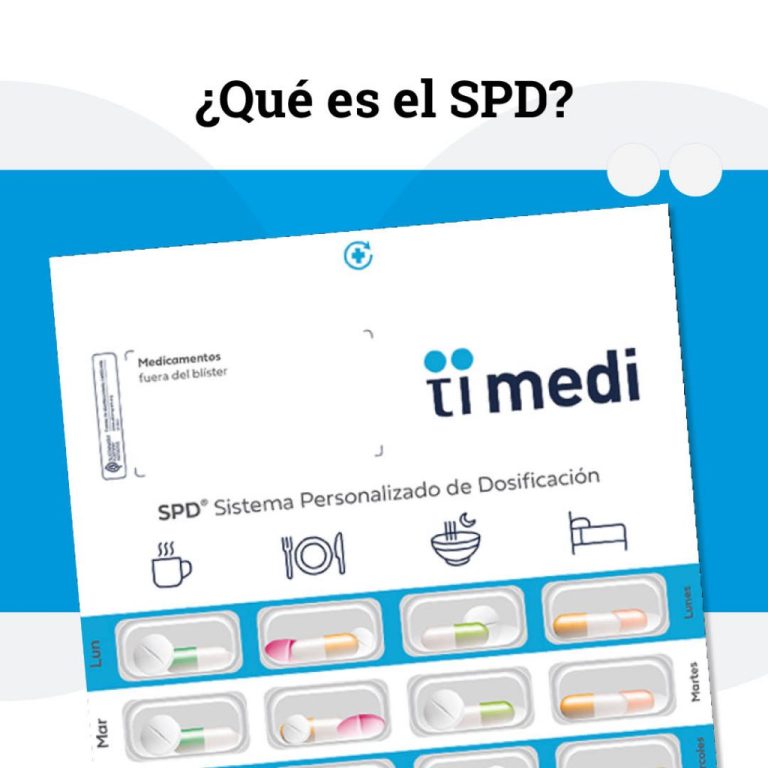Currently, more than 70% of people over 65 years of age are chronically ill, mostly multi-pathological and polymedicated. In this context, it is estimated that 50% of chronic patients are not adherent to prescribed treatments.
One of the main solutions to this situation is the Personalised Dosage System (MDS), a pharmaceutical service aimed at optimising the appropriate use of medicines by repackaging them in specialised and individualised packaging for each patient.


How does the MDS work?
The pharmacist prepares the patients’ medication organised by day and takes it according to the dosage regimen established by the physician, and reviews it to rule out possible medication-related problems (DRP). Once the medication has been validated, it is packaged in an individualised device that is properly identified.
The main advantages of this pharmaceutical care service are:
- Facilitates the organisation of medication, reducing errors and problems of forgetfulness.
- It promotes pharmaceutical care, encouraging adherence and continuity of treatment.
Manual SPD: entry barriers
Traditionally, the MDS has been prepared manually, with minimal installation and maintenance costs. Although the implementation of this service in the pharmacy is a fundamental starting point in pharmaceutical care, there are a number of problems associated with manual preparation.


Time
The main problem with manual MDS is that it is time-consuming and, as a consequence, covers a very limited volume of patients.
Human error
Distractions arising from the working environment are a potential source of error during manual preparation of the MDS.
SOPs & Traceability
Standard Operating Procedure (SOP) compliance requires a lot of effort and paperwork. Moreover, as the process is controlled manually, there is no absolute traceability and stock management is complex.
Prescription management
Proper prescription management is also a weakness of the MDS because it is hampered by manual data entry.
Communication with the doctor
In this context, there is also a problem related to professionals and the health system: the lack of coordination between levels of care.
Scalability
Despite providing individualised pharmaceutical care, the limitations of manual MDS make it difficult to increase pharmacy profitability.
Technology has made it possible to address these barriers to MDS entry through automation. Today, it is already being implemented in pharmacies to optimise the pharmacist’s work and improve people’s quality of life.
Automatic or manual MDS?
The automatic MDS has even more advantages than the manual SPD, both for the patient and the pharmacist:
- More efficient: optimises human resources and SPD preparation time, resulting in increased pharmacy throughput.
- Safer: the likelihood of human error in SPD production is reduced, making the process more reliable.
- Simpler: it allows the computerisation of all data, for better traceability of the process.
The automation of the MDS facilitates the pharmacist’s day-to-day work, and there are different technological solutions depending on the needs of each pharmacy. In addition, it manages to build patient loyalty thanks to a service that improves their health.
